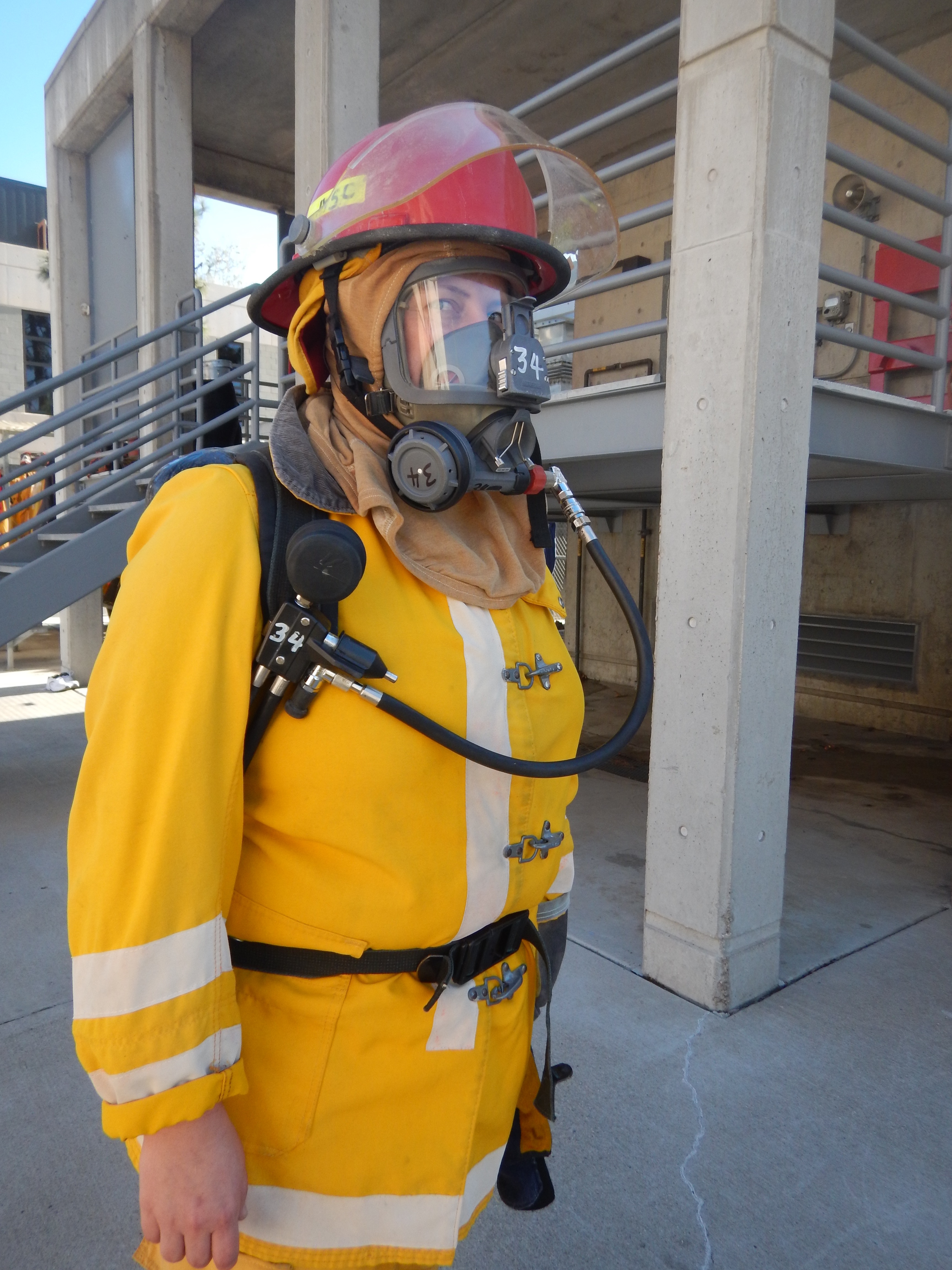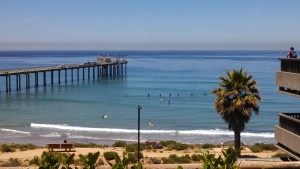
As this is my first official oceanography-themed post, here’s a little background. Since 2009, I have made a living working as a marine chemist at Scripps Institution of Oceanography (SIO). I have always loved the ocean and, feeling unfulfilled where I worked previously, I volunteered as a grunt on a research cruise with some SIO grad students. I loved it. Waking up, eating, sleeping, working, watching movies, working out – every aspect of your life done with the ocean in the background – the motion, the noises, the salty air. Seven years in, I sometimes feel fatigue with the lifestyle – we work 12 hour shifts every day and don’t get to set our own schedules – but never enough to get me to move on. The draw is too strong – to travel and to see new places, even if they’re just a patch of ocean I’ve never been to before. I feel it now, having been home for two months – the itch to get back out.
I’ve been on research cruises across all of the oceans at this point, literally from the North Pole to the Antarctic Circle. Life on board can get tedious, people get comfortable, then lazy (as people are wont to do), and the potential for accidents increases. Thankfully, I have never ended up with more than an epic bruise myself, but there is the potential for a serious emergency. “Situational awareness” and “safety first” are mantras not to be brushed aside.
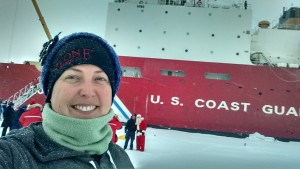
My department recently offered to cover the cost of a week of basic survival training, and I jumped at the chance. The class is designed for crew members, as a requirement to maintain their maritime license, so it was slanted towards emergencies at sea. Amongst the group of students in my class were crew members from tugboats and tall ships, an HR person from a big cruise ship company, a resident technician (equivalent to a deck boss) from my group at SIO, and a Navy safety inspector. Our instructor was retired Navy. He had served aboard destroyers in the Philippines, was injured when a missile hit his ship, talked about his PTSD and time in a psych ward openly, and every once in awhile got a faraway look in his eyes and took a deep, calming breath.
Day 1: First aid. I’ve previously taken an all-day course like this, based on Red Cross booklets. We focused on CPR training, assessing the scene, assisting someone in distress – whether it’s shock, choking, heat exhaustion, hypothermia. Situations we’re less likely to experience on a ship, like animal bites and anything involving children, I was left to read about on my own time. For me, the takeaway is that I should not hesitate to offer assistance in an emergency situation. I cannot assume someone else will take charge. This is not necessarily in my nature, but after a day of going over basics and using test equipment, I feel more confident. The instructor stressed that the most likely emergency we will experience, based on the demographics of ship’s crew, is a heart attack. Indeed, I’ve heard of a ship’s captain who died of a heart attack a few days out from port. He was placed in a freezer and the ship returned to land.
Milder emergencies do come up, and I’m pleased that I now have some relevant experience. Some ships have dedicated medical personnel, but it’s usually just mates and captains with EMT-level training. On many trips, at least one person is chronically seasick to the point of dehydration and exhaustion. I once got acid splashed in my eye and had to use the eyewash station (which was a harrowing experience in itself). I recently received an electric shock from a faulty power strip and had cramped muscles and numb fingers for awhile afterwards. Luckily in both these situations, a take-charge kind of person was in the room with me (the same woman, coincidentally) and I was quickly taken care of and the right people were alerted. With any luck I’ll never need to use the training, but I hope to step up and be that person for someone else if necessary.
Day 2: Theory of fire, which sounds more exciting than it was. Learning about the different types of fires and how to extinguish each was interesting, and will likely come in handy. I have been on a ship that did not have class D fire extinguishers, which are necessary for putting out lithium-ion battery fires. I overheard one tech telling another “So if any of the batteries starts to overheat, chuck it overboard.” You’ve undoubtedly seen pictures of what these batteries can do when overheated – scorched pants and bedding from a cell phone in a pocket or under a pillow. Apparently, if this happens on an airplane, flight attendants are taught to put it out with soda from the refreshments cart. Thus the ban on hoverboards.
Day 3: Hands-on firefighting training! We took a field trip to the naval base and joined a group of students made up of ship’s crew renewing their licenses. We geared up – pants, jacket, flash hood, gloves, boots, full-face mask connected to an oxygen tank carried like a backpack, and a helmet with a face shield. It’s a lot of gear, especially in nearly 80-degree weather. I soon had to readjust my face mask as the sweat had broken the seal it made around my face. One of the other students had to shave his beard off in order to do the training. The instinct to run into a burning building, and not away from it, even under these controlled test circumstances, did not come easily. Switching to breathing air from the tank required a slide to be closed – the Darth Vader-esque exhales helped psych me up for the experience. As with scuba diving, which nearly twenty years after getting certified I still find unnatural and a bit terrifying, it’s the ability to hear and see evidence that you are breathing that calms me.
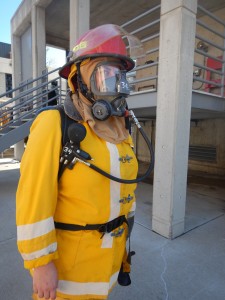
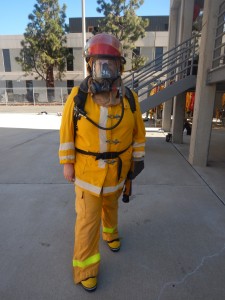
We lined up, ready to grab an extinguisher and run into a completely dark space with simulated electrical fires. Set the extinguisher down (it can weigh up to 50 pounds, no need to exhaust yourself), get the nozzle above the fire, spray. Don’t overuse the extinguishing agent, whether it’s chemical, foam or water. If used continuously, a normal sized extinguisher will last less than a minute. Watch for a reflash (when the fire sparks again). Remember where the exits are. After all the students had gone through this exercise, we were taken in small groups to witness a simulated grease fire, and what happens when you try to use water to put it out (spoiler alert: it spreads and is terrifying). A few people from the Navy class had bowed out by this point, older guys who I assume got overheated from the equipment. They sat in the shade and didn’t participate. I assume that means they don’t get their renewals.
We also ran through simulations of an engine room fire, with flames coming up through gratings in the floor. We had four people to a fire hose, trading off position without losing control. At some point, I lost track of all but one of my fellow classmates and was on the hose line with complete strangers. I couldn’t help but wonder which of them might also tap out at any moment, drop the hose, bungle a hand-off, and leave me with an out-of-control hose. I reassured myself that this was a training environment, and there was someone with their hand on the valve, ready to shut off the water. Luckily I didn’t have to find out, though I asked later and was told that it’s the next person in line’s responsibility to inch forward on the hose and get it under control, all while trying not to get hit in the face with the heavy-duty nozzle. We went through a few more simulations, emphasizing the different nozzle positions to suit the purpose (a wide net of water to hide behind as you approach a fire, a cone for fires on solid equipment, and a narrow stream to break up substrate for a mattress or fabric fire).
At the end of the day, my coworker and I ended up at Stone for a well-deserved cold pint of the good stuff. Nothing like some good team-building!
Day 4: Personal survival. Abandoning ship is the last option, only in dire circumstances are you better off without the ship. Based on the preview for the recent movie The Finest Hours I am left to believe that it portrays a real-life scenario in which crew stayed onboard half of a ship rather than get in lifeboats in a severe storm. So that should tell you something.
The first thing you do if you end up in a lifeboat? Take seasickness medication. We learned not to eat or drink anything for the first 24 hours you’re in a lifeboat, as you will likely be sick and not get any benefit.
What can’t you survive without? Hope. That being said, drinking water is pretty important too, and we learned that all lifeboats come with some sort of system to collect rainwater and condensation.
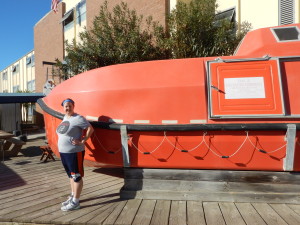
We spent some time in the training facility’s full-size lifeboat contemplating what life would be like sharing that amount of space with your shipmates for an undetermined amount of time. It was the closed-top model that I’ve seen only on a research boat at high latitudes, and is rather posh compared to the inflatable versions on most of the vessels I travel on.
We also tested some training versions of emergency equipment, like an EPIRB (distress beacon), SART (radar signal), radios, flares, smoke bombs, and EpiPens. This day’s training booklet contained some interesting facts, like a list of the most dangerous sharks, and that turtles can still bite after you’ve cut off their heads.
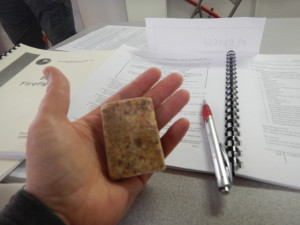
Day 5: Social responsibility and the in-pool practical for the personal survival lesson. After a few hours in the morning “talking about our god-damn feelings” as the instructor put it, we were off to a public pool in National City. First, we all had to prove we could tread water for a minute in our clothes. Then a 25-person life raft was inflated with a shop-vac and placed into the pool upside down. Apparently, they will open that way more often than not, so step 1 is to right them. It’s daunting; this is a huge piece of equipment. It took four people to carry the deflated raft in its pill-box case to and from the van. Now imagine wrangling it in the ocean, unpredictable waves breaking around you, other debris in the water, and clearly everyone is under duress if the situation has deteriorated to the point where you’re abandoning ship. I am so glad that I’ve done it for myself, in a pool in a training environment. It is a straightforward operation – grab the rope over the top of the gas canister, plant your feet against the raft, and climb. It will soon be tipping towards you.
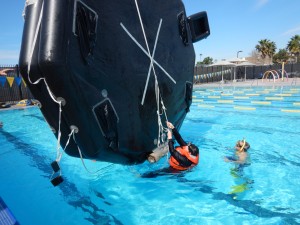
Step 2 is “don’t panic as this huge thing comes crashing down on top of you.” We were instructed not to try to avoid it; flipping over on your stomach or trying to move out of the way can get you snagged or tangled. So try to be zen as this black mass comes straight at your face. I watched some of the other students go first, and managed to keep my cool when it was my turn. I was actually pretty excited to hang out under the raft for a few moments; there’s a nice big air pocket which could come in handy. Calmly move out from under the raft and towards the “porch,” an inflated area about the size of a doormat that you are supposed to roll onto and use in order to get over the side and into the raft. I was not able to do this on my own, which bummed me out. I watched the others, some of them with barely any effort, flip up into the raft. I tried 2 or 3 times and was exhausting myself, so the instructor gave me a pass. You’re a lot less maneuverable with a lifejacket on, just imagine if we’d been in immersion suits! I’d like to think that in an emergency situation I’ll be able to get myself in to safety, and that other people already in the raft would offer me assistance.
Immersion suits, affectionately called Gumby suits (see below), are standard equipment on our research ships. We often have to don them at the beginning of the trip as part of the safety briefing. There are some among us that race to make sure we can do it in under 60 seconds, and/or faster than our friends. The one I used on this day had some holes in it and the zipper wouldn’t close (the third mate of any ship would make sure that didn’t happen at sea).
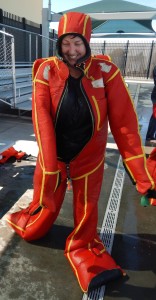

An important part of donning an immersion suit is getting rid of trapped air, as that will rise to the surface. So if, say, there’s air down at your feet, that end of you will rise up in the water and the important (ie breathing) end of you will be harder to keep above water. It’s an easy fix. Once you’re all zipped in, crouch down – you’ll feel the trapped air rush out through the opening around your face. Now you’re ready to jump in the water. Thankfully we were just stepping off the edge of the pool, a drop of a few inches at most. In an emergency situation, this could be a drop of several stories – though, again, one should not be getting into the water unless the situation is desperate. The suits keep you
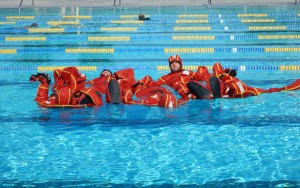
buoyant, warm, and visible. Link arms and legs with others to make yourself even more visible. We made a nice little raft of ourselves and relaxed in the sun. With a storm lapping over you after you’ve just left the security of a ship, I imagine this scene is much scarier. Again, I’m glad I’ve done it in controlled circumstances so that I at least have a taste of the procedure. My suit being faulty and filling with water made it much harder to get out of the pool – I went with the trusty beached whale approach, heaving my body forward and then rolling.

I don’t want to glaze over the social responsibility section, it deserves its fair share of time and energy. I do often wonder if it can be taught. I’ve shared small apartments with too many family members, gone to camp, had roommates with no sense of personal space – all of this has prepared me to be a good citizen when living at sea. Change the toilet paper roll. Start a new pot of coffee. Be tidy in your work and living spaces. Try to keep your bad mood to yourself. There are always some people who just don’t take into account that we’re sharing space, or think they deserve special attention. I’m not sure they can be retrained. Usually, I just roll my eyes and be glad I didn’t marry someone like that.
On top of that life lesson, which thankfully I didn’t learn the hard way, I found this course to be very useful. I may not remember every detail, but I walked away more confident in my ability to notice potential hazards, speak up, and act if things go wrong. You want me on your ship.
